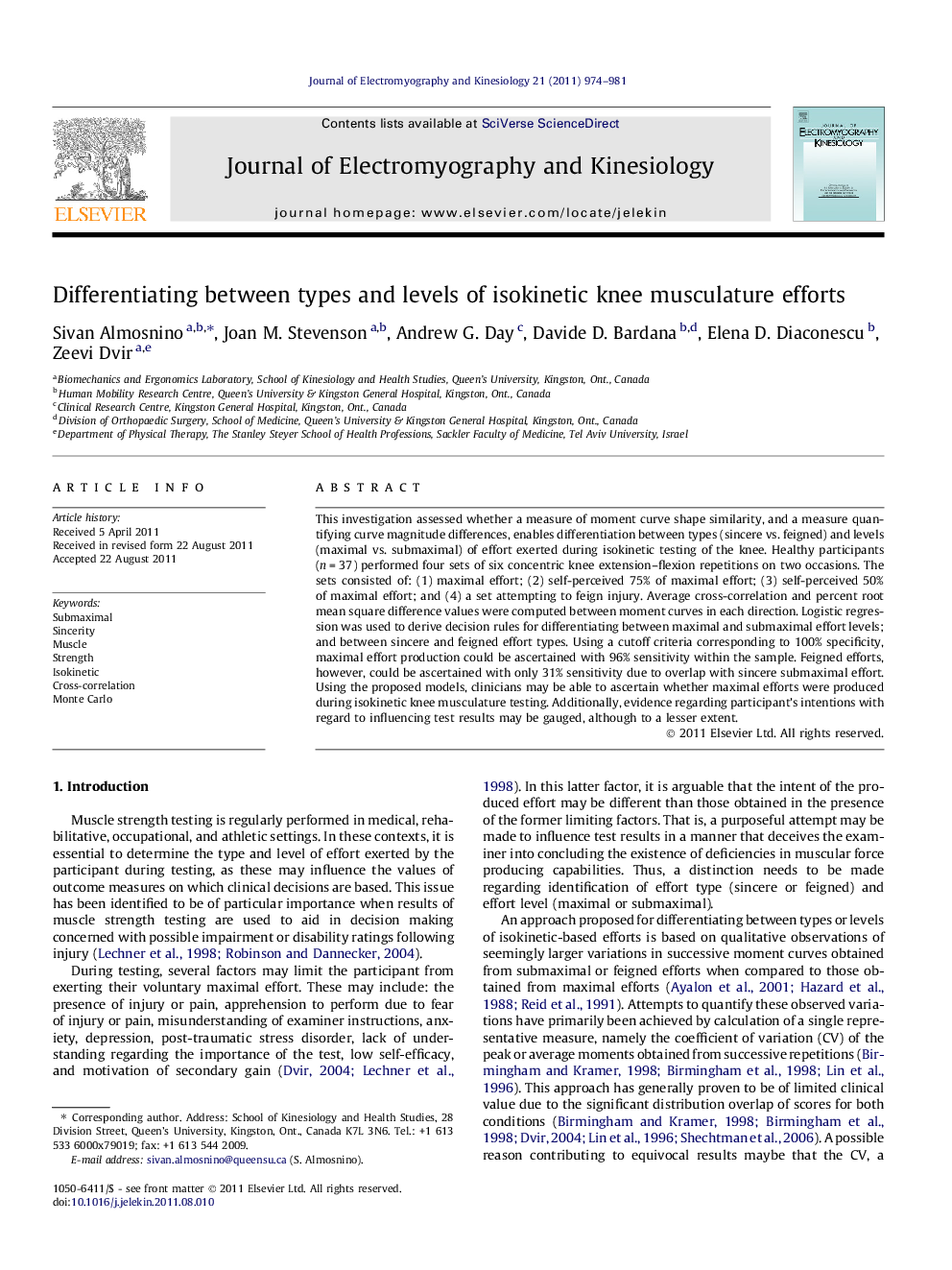| Article ID | Journal | Published Year | Pages | File Type |
|---|---|---|---|---|
| 4064742 | Journal of Electromyography and Kinesiology | 2011 | 8 Pages |
This investigation assessed whether a measure of moment curve shape similarity, and a measure quantifying curve magnitude differences, enables differentiation between types (sincere vs. feigned) and levels (maximal vs. submaximal) of effort exerted during isokinetic testing of the knee. Healthy participants (n = 37) performed four sets of six concentric knee extension–flexion repetitions on two occasions. The sets consisted of: (1) maximal effort; (2) self-perceived 75% of maximal effort; (3) self-perceived 50% of maximal effort; and (4) a set attempting to feign injury. Average cross-correlation and percent root mean square difference values were computed between moment curves in each direction. Logistic regression was used to derive decision rules for differentiating between maximal and submaximal effort levels; and between sincere and feigned effort types. Using a cutoff criteria corresponding to 100% specificity, maximal effort production could be ascertained with 96% sensitivity within the sample. Feigned efforts, however, could be ascertained with only 31% sensitivity due to overlap with sincere submaximal effort. Using the proposed models, clinicians may be able to ascertain whether maximal efforts were produced during isokinetic knee musculature testing. Additionally, evidence regarding participant’s intentions with regard to influencing test results may be gauged, although to a lesser extent.
